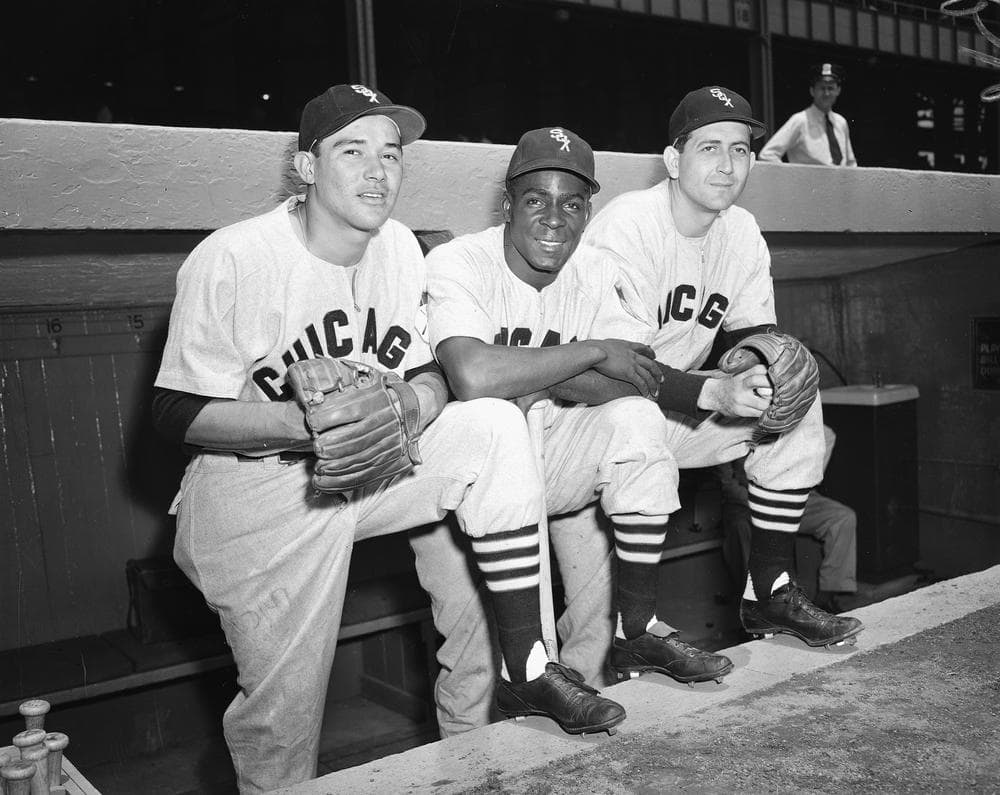Advertisement
Feature
Baseball's Miñoso Still Upbeat, Still Hopeful

By Yolanda Perdomo
Later this month the Baseball Hall of Fame will induct Chicago Cubs third baseman Ron Santo, who died in 2010. It's a moment many Cubs fans view as long overdue. But their counterparts across town are still waiting for a White Sox icon to receive baseball's ultimate honor.
In the same vote, Saturino Orestes Armas Arrieta - better known as "Minnie" - Miñoso fell four votes short of induction.
Just before game time at U.S. Cellular Field, the 86-year-old Miñoso, who’s known as "Mr. White Sox" and the team’s unofficial ambassador, is greeted as if he was still part of the starting lineup. People wave, shake his hand, call out his name, and he greets everyone with a smile and a wink, as if he’s known them for years.
"Hey how are you? Good to see you, buddy," Miñoso says to a fan.
"We’ll get you in the [Baseball] Hall of Fame," the fan replies.
"Oh yeah? When? Don’t wait until I’m gonna die," Miñoso says with a smile.
To understand where he’s coming from you have to go all the way back to the Cuba of the 1940s. In Miñoso’s autobiography, he tells a story of wanting to play so badly in Havana that he got a friend who worked in the post office to stamp a fake letter and deliver it right at the time when he’d be working in the fields.
"Then the next day, he yelled out ‘Orestes! I have a surprise for you!’ I said ‘me?’’ ‘From Havana, from the baseball club!’ He gave me the letter," Miñoso recalled. "The family I was with wanted to know what it was. I said ‘look, I have a letter from Havana to play. And they said ‘You must go! Go now! You never know what will come from it.’"
[sidebar title="Preserving Negro Leagues History" width="630" align="right"]In 2011, Only A Game's Greg Echlin reported on efforts to identify and properly mark graves of Negro League players.[/sidebar]Miñoso did play in Havana and in 1945, he joined the New York Cubans of the Negro Leagues. In 1948 Minoso signed with the Cleveland Indians and made the jump to the major leagues.
Advertisement
"It was like saying you’re going to the presidential palace. That’s how we felt making it to the major leagues," Miñoso said. "When Jackie Robinson signed on with the [Brooklyn] Dodgers, all of us black players, we saw what heights we could achieve."
As a black Cuban, Miñoso had two strikes coming into the game, according to Adrian Burgos, a history professor at the University of Illinois and the author of two books about Latinos in baseball.
"Minoso did not have the luxury, as a black Latino, when he’s hit by a pitch to go running after the pitcher. That was read differently. It was viewed differently," Burgos said. "And if he does that in 1949, he gets bounced back to the Pacific Coast League. Quickly."
In 1951, Miñoso was traded to the White Sox breaking the color barrier in Chicago two years before Ernie Banks joined the Cubs. Miñoso retired from the majors in 1964, but played in the minors and in Mexico before being brought back by Chicago White Sox owner and promoter extraordinaire Bill Veeck. Veeck got Miñoso to play brief stints in 1976 and in 1980 just so he could say Miñoso played five decades of Major League Baseball. For some baseball observers, it was seen as a stunt. And it may have overshadowed the fact that he was a seven-time All-Star and earned three Gold Gloves.
Miñoso is quick to defend Veeck and his comebacks.
"What does that have to do with anything? I never heard anything about that," Miñoso said with frustration. "That had nothing to do with it. I don’t think there’s anyone who says that’s the reason. And my records are there! My numbers! I’m asking, what did I do wrong?"
Minoso batted .298 and lead the league in stolen bases three times.
It’s not just those who saw Miñoso in the '50s and '60s that think he deserves entry into the hall. He connects with young fans like Jim Margalus, managing editor of SouthSideSox.com.
"I think people don’t know how he changed the game. Because he was one of the first all out players to run the bases like he did," Margalus said. "He changed the way baseball is played in the '50s. He might be the most talented player the White Sox have had from the Black Sox scandal to the 1980s.
Last fall, to promote Miñoso’s accomplishments, the White Sox sponsored a symposium with baseball writers, historians and ex-ball players highlighting his career accomplishments.
[sidebar title="Cuban Star" width="630" align="right"]In June 2011, Bill Littlefield spoke with Adrian Burgos about his book Cuban Star: How One Negro-League Owner Changed the Face of Baseball [/sidebar]"With the with new evaluative tools that we use today with Sabermetrics, how Minnie Minoso stacked up to that period," Burgos said. "In the AL, he was basically ranked with all these all new approaches the 3rd best player. Behind [Ted] Williams and [Mickey] Mantle."
But Burgos says Minoso’s attitude tells a story that goes beyond scorecards and record books.
"The smile he wears is a testament to his durability. You cannot take Minnie Miñoso down. If the racists of the 1950s were throwing at him with their words, with their baseballs and all those things, nothing is ever going to take him down," Burgos said. "And that is what I think people don’t grasp about Minnie Miñoso. He is an inspiring baseball man."
Miñoso will be eligible for the Baseball Hall of Fame's Golden Era ballot in 2014 just as he turns 89 years old.
This segment aired on July 7, 2012.